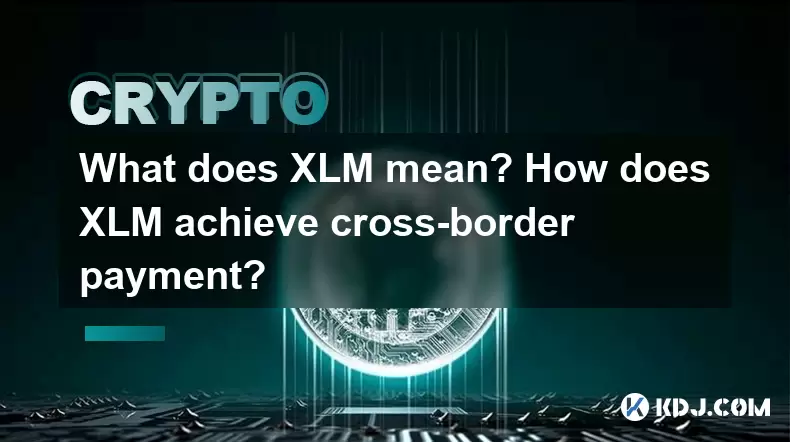-
 Bitcoin
Bitcoin $121700
1.34% -
 Ethereum
Ethereum $4761
1.55% -
 XRP
XRP $3.238
-1.23% -
 Tether USDt
Tether USDt $1.000
0.06% -
 BNB
BNB $866.7
1.65% -
 Solana
Solana $204.4
1.84% -
 USDC
USDC $0.9997
-0.01% -
 Dogecoin
Dogecoin $0.2416
-3.00% -
 Cardano
Cardano $0.9890
13.42% -
 TRON
TRON $0.3687
3.07% -
 Chainlink
Chainlink $23.73
0.28% -
 Hyperliquid
Hyperliquid $46.99
4.27% -
 Stellar
Stellar $0.4468
-1.13% -
 Sui
Sui $3.976
-0.04% -
 Bitcoin Cash
Bitcoin Cash $608.8
0.01% -
 Hedera
Hedera $0.2684
1.42% -
 Ethena USDe
Ethena USDe $1.000
-0.02% -
 Avalanche
Avalanche $25.18
-0.30% -
 Litecoin
Litecoin $128.3
-2.70% -
 Toncoin
Toncoin $3.543
0.96% -
 UNUS SED LEO
UNUS SED LEO $9.277
0.28% -
 Shiba Inu
Shiba Inu $0.00001373
-1.48% -
 Uniswap
Uniswap $11.56
-4.44% -
 Polkadot
Polkadot $4.224
-0.47% -
 OKB
OKB $104.5
0.58% -
 Bitget Token
Bitget Token $4.762
-1.96% -
 Dai
Dai $0.9999
0.01% -
 Cronos
Cronos $0.1641
-2.63% -
 Pepe
Pepe $0.00001195
-3.97% -
 Aave
Aave $326.9
1.00%
What does XLM mean? How does XLM achieve cross-border payment?
XLM, or Stellar Lumens, enables fast, low-cost cross-border payments by connecting financial institutions on the Stellar network, using a decentralized consensus protocol.
May 12, 2025 at 01:07 pm

What does XLM mean? How does XLM achieve cross-border payment?
XLM, or Stellar Lumens, is a cryptocurrency that serves as the native asset of the Stellar network. The Stellar network aims to facilitate fast, reliable, and low-cost cross-border payments. XLM plays a crucial role in maintaining the network's operations and incentivizing participants. In this article, we will explore what XLM means and how it achieves cross-border payments.
What is XLM?
XLM, also known as Stellar Lumens, is the native digital currency of the Stellar network. The Stellar network was founded in 2014 by Jed McCaleb, one of the co-founders of Ripple, and Joyce Kim. The primary goal of the Stellar network is to connect financial institutions and enable them to move money quickly, reliably, and at a low cost. XLM serves as a bridge currency, facilitating transactions between different currencies on the network.
How Does XLM Facilitate Cross-Border Payments?
XLM achieves cross-border payments through the use of its decentralized network, which connects banks, payment processors, and individuals. The Stellar network uses a consensus protocol called the Federated Byzantine Agreement (FBA), which allows for rapid transaction validation. Here’s how XLM enables cross-border payments:
Asset Issuance: Financial institutions can issue assets on the Stellar network, which can represent various currencies like USD, EUR, or even other cryptocurrencies. These assets are then used for transactions.
Path Payment: The Stellar network uses a feature called path payment, which automatically finds the best path to convert one asset into another. For example, if a user wants to send USD to someone who wants to receive EUR, the network will find the most efficient route to make this conversion happen.
Anchors: Anchors are trusted entities on the Stellar network that hold real-world assets and issue corresponding digital assets on the network. They play a crucial role in facilitating the conversion between digital and fiat currencies.
Low Transaction Fees: Transactions on the Stellar network are extremely cost-effective, with fees typically around 0.00001 XLM per transaction. This makes it an attractive option for cross-border payments.
The Role of XLM in the Stellar Ecosystem
XLM is essential for the operation and security of the Stellar network. It serves several key functions:
Transaction Fees: Every transaction on the Stellar network requires a small fee, which is paid in XLM. These fees help prevent spam and denial-of-service attacks on the network.
Minimum Balance Requirement: To create an account on the Stellar network, users must hold a minimum balance of 1 XLM. This requirement ensures that accounts are not created and abandoned, which could negatively impact the network's performance.
Incentivizing Participation: XLM can be used to incentivize participation in the network. For example, anchors and other participants might be rewarded with XLM for their services.
How to Use XLM for Cross-Border Payments
To use XLM for cross-border payments, follow these steps:
Set Up a Stellar Wallet: First, you need to set up a wallet that supports the Stellar network. Popular options include StellarTerm, Lobstr, and the official Stellar Desktop Client.
Acquire XLM: You can purchase XLM from various cryptocurrency exchanges such as Binance, Kraken, or Coinbase. Once you have XLM, transfer it to your Stellar wallet.
Create an Account on the Stellar Network: To send and receive payments, you need to create an account on the Stellar network. This can be done through your wallet by generating a new account and funding it with the minimum balance of 1 XLM.
Initiate a Transaction: To send a cross-border payment, you can use the path payment feature. For example, if you want to send USD to someone who wants to receive EUR, you can initiate a transaction from your wallet, specifying the amount of USD you want to send and the EUR you want the recipient to receive. The Stellar network will automatically find the best path to convert your USD to EUR.
Confirm the Transaction: Once you initiate the transaction, it will be validated by the Stellar network's consensus protocol. The transaction should be completed within a few seconds, and the recipient will receive the desired amount in EUR.
Advantages of Using XLM for Cross-Border Payments
Using XLM for cross-border payments offers several advantages:
Speed: Transactions on the Stellar network are processed in seconds, making it ideal for real-time payments.
Low Cost: The transaction fees on the Stellar network are minimal, making it a cost-effective solution for cross-border transfers.
Accessibility: The Stellar network is open to anyone, making it easy for individuals and businesses to participate in cross-border payments.
Security: The use of the Federated Byzantine Agreement ensures that transactions are secure and reliable.
Real-World Applications of XLM
XLM has been used in various real-world applications for cross-border payments. Some notable examples include:
MoneyGram Partnership: Stellar has partnered with MoneyGram to enable faster and cheaper cross-border payments. Users can send money through the Stellar network, and MoneyGram facilitates the conversion to fiat currency at the receiving end.
IBM World Wire: IBM's World Wire payment network uses the Stellar network to facilitate cross-border payments. This partnership aims to streamline and reduce the cost of international transactions for businesses.
Flare Networks: Flare Networks uses the Stellar network to provide decentralized finance (DeFi) solutions, including cross-border payments.
Frequently Asked Questions
Q: Can I use XLM to send money to any country?
A: Yes, XLM can be used to send money to any country that has a participating anchor or financial institution on the Stellar network. However, the availability of anchors and the ease of converting XLM to local currency may vary by country.
Q: How secure are transactions on the Stellar network?
A: Transactions on the Stellar network are secured by the Federated Byzantine Agreement (FBA) consensus protocol, which ensures that transactions are validated quickly and reliably. Additionally, the use of cryptographic keys adds an extra layer of security to prevent unauthorized access to accounts.
Q: Are there any limitations to using XLM for cross-border payments?
A: While XLM offers many advantages for cross-border payments, there are some limitations. The availability of anchors and the ease of converting XLM to local currency can vary by country. Additionally, regulatory compliance and the need for users to understand how to use the Stellar network can pose challenges.
Q: How can I track the status of my XLM transaction?
A: You can track the status of your XLM transaction using a Stellar blockchain explorer such as StellarExpert or StellarScan. These tools allow you to enter your transaction ID and view the transaction's progress and confirmation status on the Stellar network.
Disclaimer:info@kdj.com
The information provided is not trading advice. kdj.com does not assume any responsibility for any investments made based on the information provided in this article. Cryptocurrencies are highly volatile and it is highly recommended that you invest with caution after thorough research!
If you believe that the content used on this website infringes your copyright, please contact us immediately (info@kdj.com) and we will delete it promptly.
- Kazakhstan's Crypto Leap: Bitcoin ETF and Central Asia's Digital Finance Future
- 2025-08-13 12:45:19
- BlockDAG Presale Blazes Past $371M: Fundraising Frenzy Fuels Crypto Sensation
- 2025-08-13 13:05:21
- Meme Coins: Chasing the 2025 Surge – Which Will Moonshot?
- 2025-08-13 10:25:23
- Bitcoin's Wild Ride: Rally, Pullback, and What's Next
- 2025-08-13 10:25:23
- Bitcoin, Bitmax, and Institutional Demand: A New Era of Crypto Investment
- 2025-08-13 10:45:12
- Solana, ROAM, and Airdrops: What's the Buzz in 2025?
- 2025-08-13 11:35:13
Related knowledge

How to purchase Aragon (ANT)?
Aug 09,2025 at 11:56pm
Understanding Aragon (ANT) and Its PurposeAragon (ANT) is a decentralized governance token that powers the Aragon Network, a platform built on the Eth...

Where to trade Band Protocol (BAND)?
Aug 10,2025 at 11:36pm
Understanding the Role of Private Keys in Cryptocurrency WalletsIn the world of cryptocurrency, a private key is one of the most critical components o...

What is the most secure way to buy Ocean Protocol (OCEAN)?
Aug 10,2025 at 01:01pm
Understanding Ocean Protocol (OCEAN) and Its EcosystemOcean Protocol (OCEAN) is a decentralized data exchange platform built on blockchain technology,...

How to invest in Kyber Network Crystal v2 (KNC)?
Aug 12,2025 at 05:21pm
Understanding Kyber Network Crystal v2 (KNC)Kyber Network is a decentralized liquidity hub built on the Ethereum blockchain that enables instant token...

Where can I buy UMA (UMA)?
Aug 07,2025 at 06:42pm
Understanding UMA and Its Role in Decentralized FinanceUMA (Universal Market Access) is an Ethereum-based decentralized finance (DeFi) protocol design...

How to sell my Ren (REN) tokens?
Aug 13,2025 at 11:35am
Understanding REN Tokens and Their Role in Decentralized FinanceREN is an ERC-20 token that powers the Ren protocol, a decentralized interoperability ...

How to purchase Aragon (ANT)?
Aug 09,2025 at 11:56pm
Understanding Aragon (ANT) and Its PurposeAragon (ANT) is a decentralized governance token that powers the Aragon Network, a platform built on the Eth...

Where to trade Band Protocol (BAND)?
Aug 10,2025 at 11:36pm
Understanding the Role of Private Keys in Cryptocurrency WalletsIn the world of cryptocurrency, a private key is one of the most critical components o...

What is the most secure way to buy Ocean Protocol (OCEAN)?
Aug 10,2025 at 01:01pm
Understanding Ocean Protocol (OCEAN) and Its EcosystemOcean Protocol (OCEAN) is a decentralized data exchange platform built on blockchain technology,...

How to invest in Kyber Network Crystal v2 (KNC)?
Aug 12,2025 at 05:21pm
Understanding Kyber Network Crystal v2 (KNC)Kyber Network is a decentralized liquidity hub built on the Ethereum blockchain that enables instant token...

Where can I buy UMA (UMA)?
Aug 07,2025 at 06:42pm
Understanding UMA and Its Role in Decentralized FinanceUMA (Universal Market Access) is an Ethereum-based decentralized finance (DeFi) protocol design...

How to sell my Ren (REN) tokens?
Aug 13,2025 at 11:35am
Understanding REN Tokens and Their Role in Decentralized FinanceREN is an ERC-20 token that powers the Ren protocol, a decentralized interoperability ...
See all articles

























































































